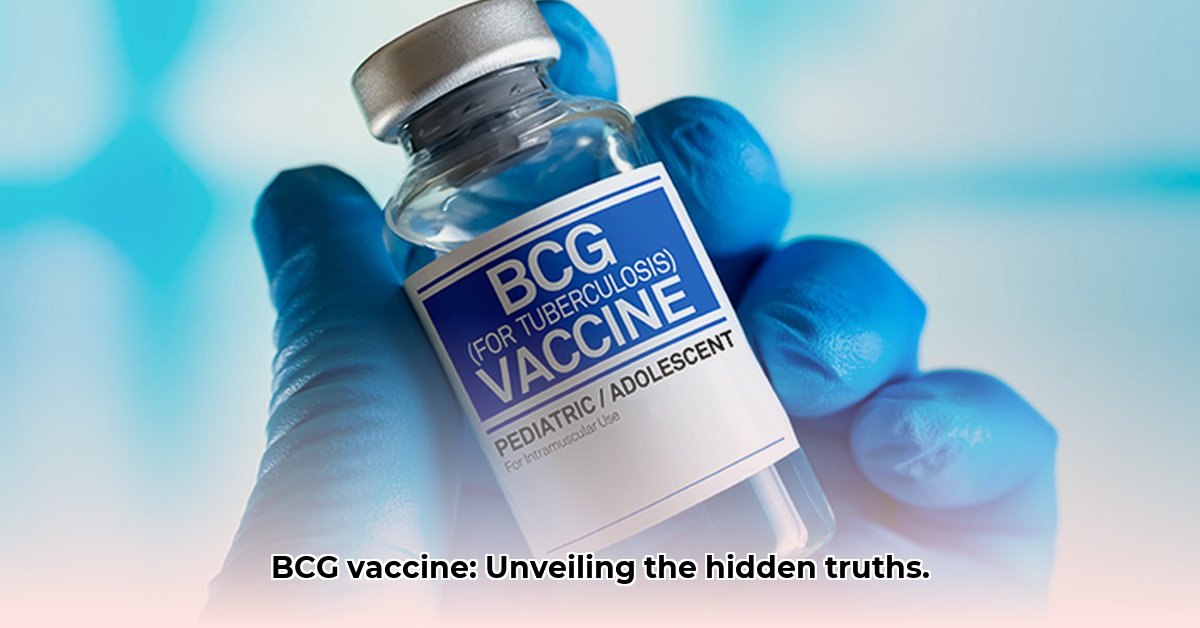
BCG Vaccine in South Africa: A Balancing Act
The Bacillus Calmette-Guérin (BCG) vaccine is a cornerstone of tuberculosis (TB) prevention globally, offering significant protection against severe forms of the disease. In South Africa, however, the high prevalence of HIV introduces a critical layer of complexity. While the BCG vaccine protects against TB in HIV-negative infants, it carries a small but significant risk of disseminated BCG (dBCG), a severe complication potentially fatal to HIV-positive infants. This necessitates a careful weighing of benefits and risks, making the optimal BCG vaccination strategy a subject of ongoing debate and crucial importance. How can we best protect our infants from TB while minimising the risks associated with the BCG vaccine?
South Africa's Unique Challenge: Dual Burden of TB and HIV
South Africa faces a formidable challenge: high rates of both TB and HIV. The confluence of these two diseases complicates BCG vaccination decisions significantly. Many pregnant women in South Africa are living with HIV, thereby increasing the risk of their newborns being infected. This heightened vulnerability necessitates a nuanced approach to BCG vaccination, carefully considering the risk of dBCG in HIV-positive infants. Furthermore, our healthcare system faces constraints in resource availability and access, adding another layer of complexity.
"The dual burden of TB and HIV in South Africa significantly complicates BCG vaccination strategies, particularly regarding resource allocation and the need for integrated approaches," states Dr. Nomusa Makhubu, Infectious Disease Specialist at Chris Hani Baragwanath Hospital. The uneven distribution of healthcare resources across the country adds another hurdle to effective implementation.
The Ongoing Debate: Timing and Strategy
The optimal timing and strategy for BCG vaccination in HIV-exposed infants remain a subject of intense debate. Some advocate for immediate vaccination, underlining the substantial benefits of BCG in preventing severe TB. They argue that the risk of TB is far higher than the risk of dBCG in most cases. Others propose a delay in vaccination to allow for early HIV diagnosis and initiation of antiretroviral therapy (ART), believing this minimises the risk of dBCG, yet acknowledging potential delays in TB prevention. Evidence supports both sides, highlighting the lack of a universally accepted “best” approach. What is the optimal balance of risk mitigation versus immediate protection?
"The evidence is inconclusive regarding the optimal timing of BCG vaccination in HIV-exposed infants," explains Professor Bongani Mayosi, leading Cardiologist and former Dean of the Faculty of Health Sciences at the University of Cape Town. "Further research is crucial to inform evidence-based policy."
Actionable Recommendations: A Multi-pronged Approach
Addressing this complex issue requires a multi-pronged strategy involving several key stakeholders:
National Government: Invest in widespread, rapid, and accessible newborn HIV testing programs. Strengthen PMTCT programs to reduce mother-to-child HIV transmission rates. Develop and disseminate clear, evidence-based national guidelines on BCG vaccination, incorporating the latest scientific evidence.
Provincial Health Departments: Expand access to ART for all HIV-positive infants. Enhance healthcare worker training in BCG vaccination protocols and the management of potential adverse effects. Implement robust tracking systems to minimise loss-to-follow-up and ensure effective monitoring of programme effectiveness.
Healthcare Workers: Undergo continuous professional development on the complexities of BCG use in the context of HIV, including the appropriate actions to mitigate risk. Ensure consistent adherence to established vaccination protocols. Improve early identification and management of HIV-positive infants.
Parents/Guardians: Receive clear and comprehensive information about BCG vaccination, including its benefits, risks, and the importance of follow-up care. Actively participate in their children's healthcare.
Conclusion: A Collaborative Imperative
Optimising BCG vaccination strategies in South Africa requires a collaborative and multi-sectoral approach. Improving access to rapid HIV diagnostics, expanding ART provision, enhancing healthcare worker training, and strengthening public health surveillance are integral to protecting infants from both TB and the risks associated with BCG. Investing in research to explore alternative preventive strategies, such as isoniazid preventive therapy (IPT), is also crucial. Only through a united front can South Africa effectively navigate this complex challenge and ensure the health and wellbeing of its most vulnerable citizens. This is not merely a medical challenge; it's an issue that demands coordinated effort across all sectors and levels of our society.